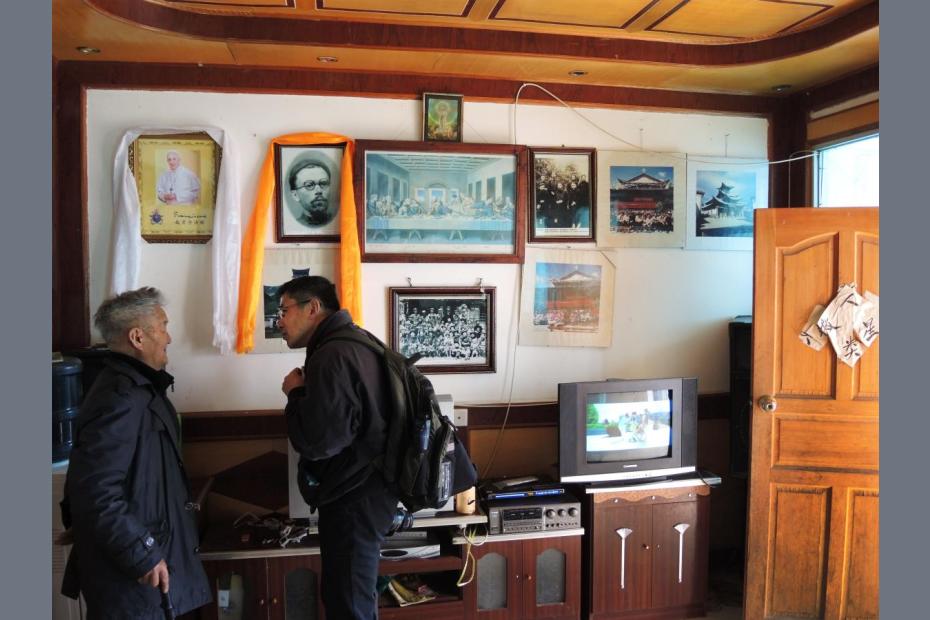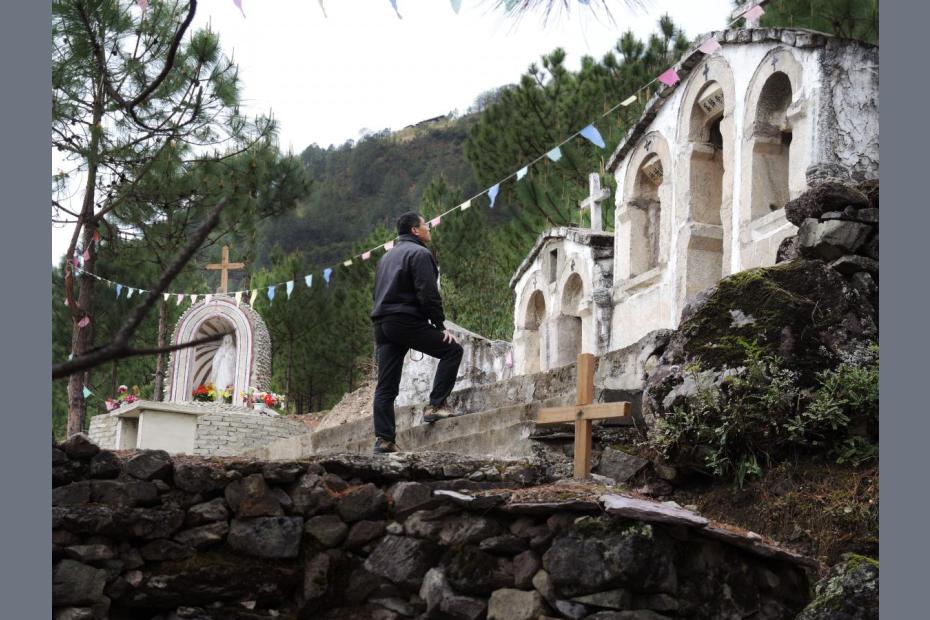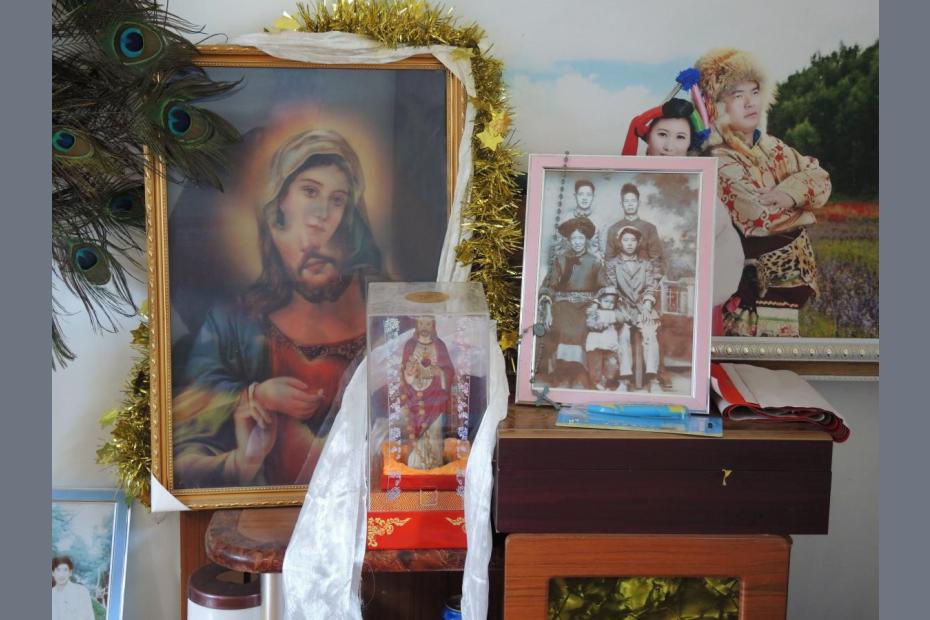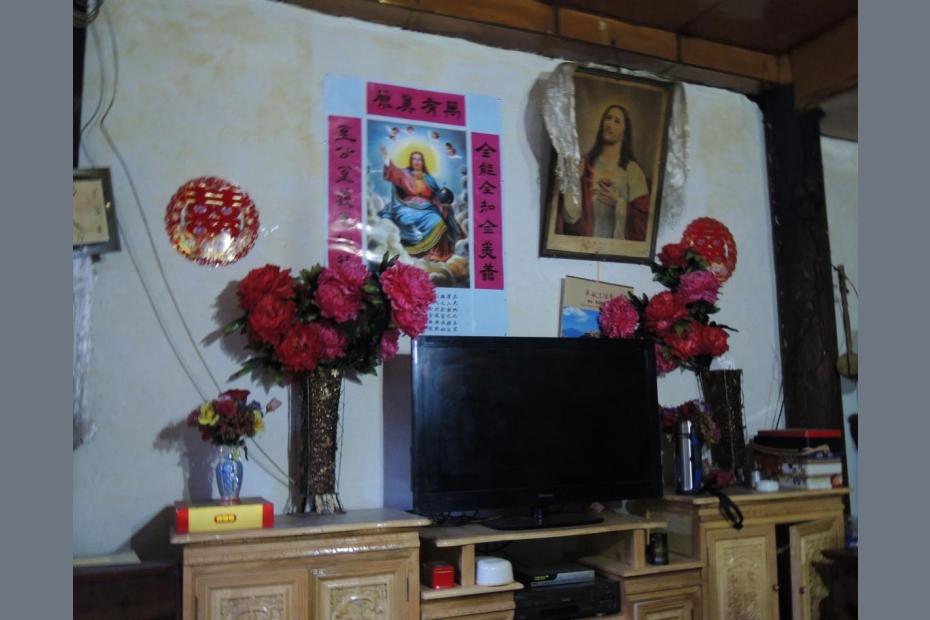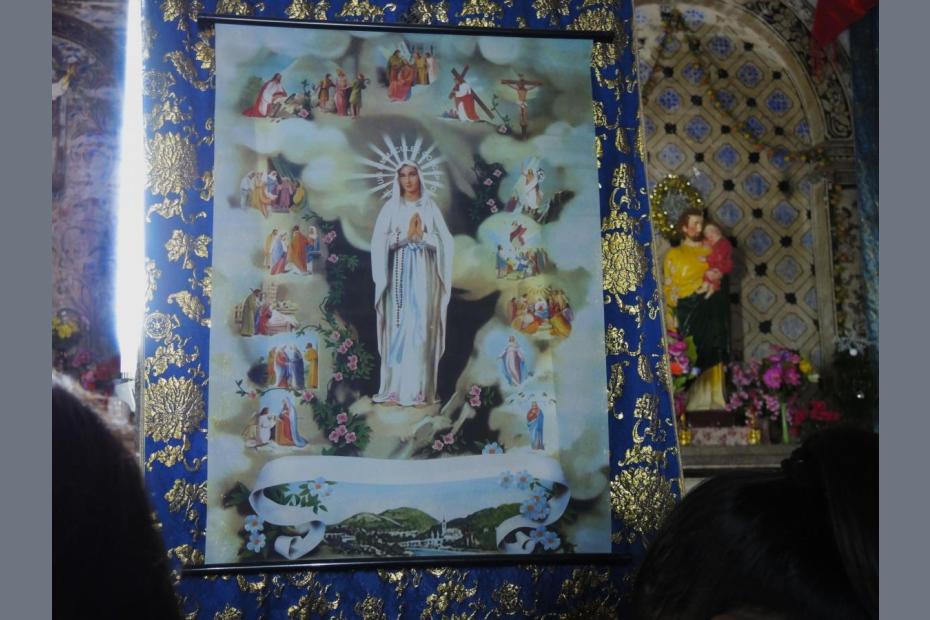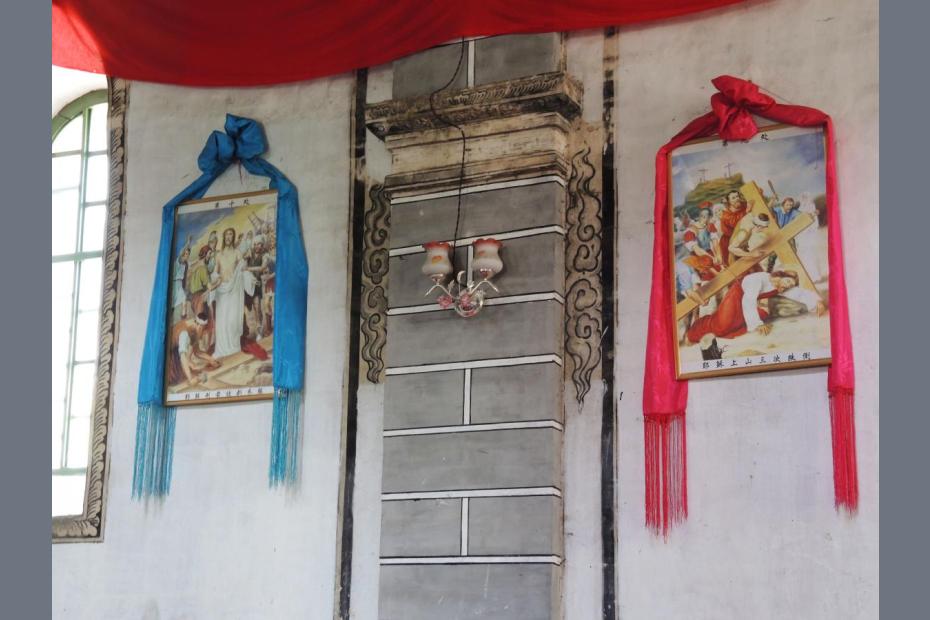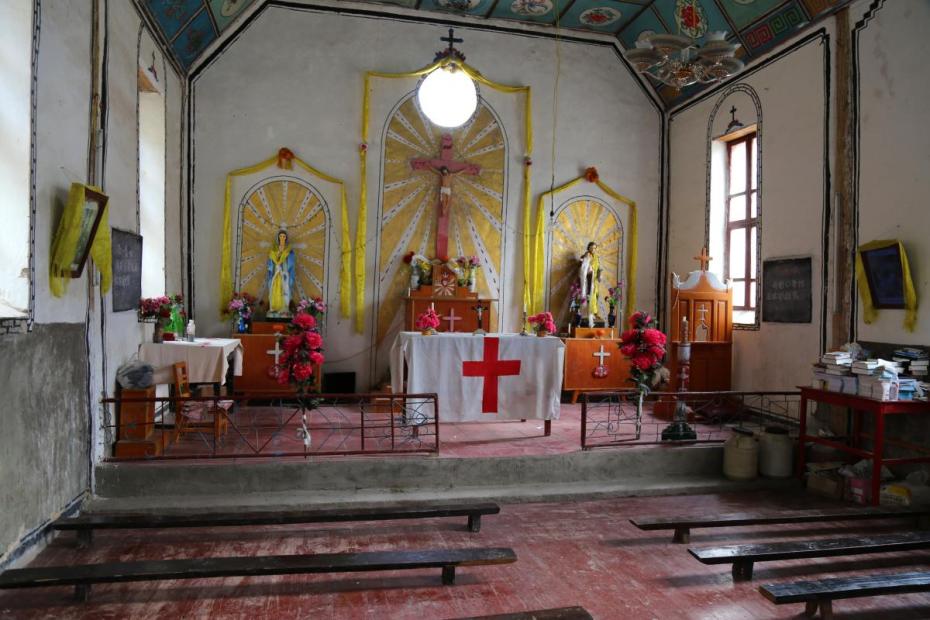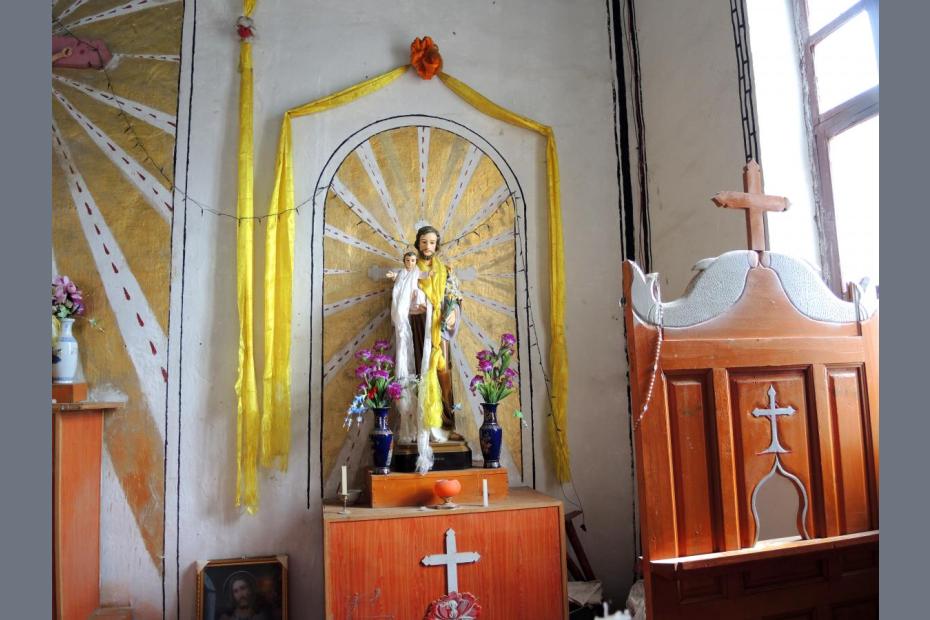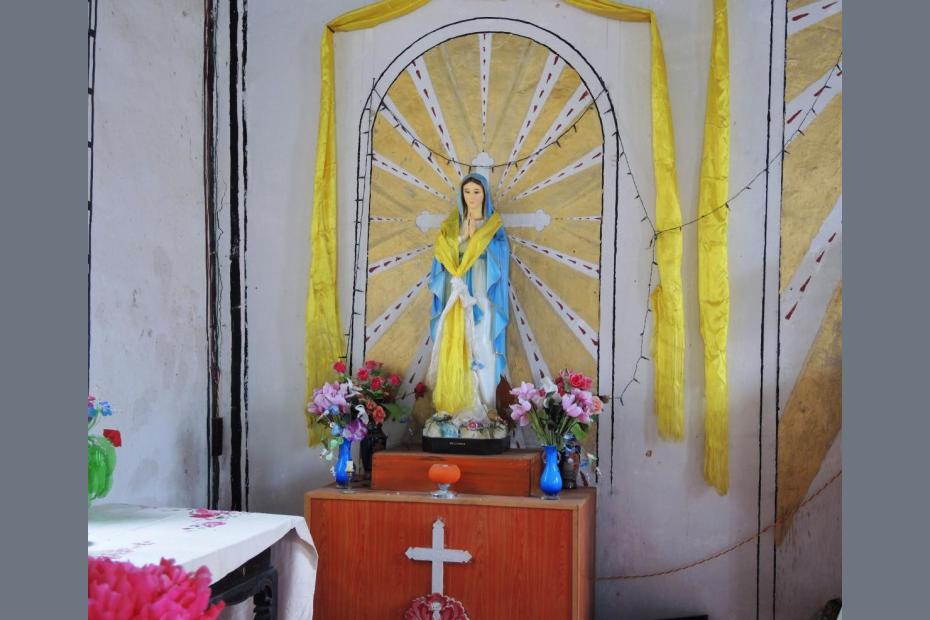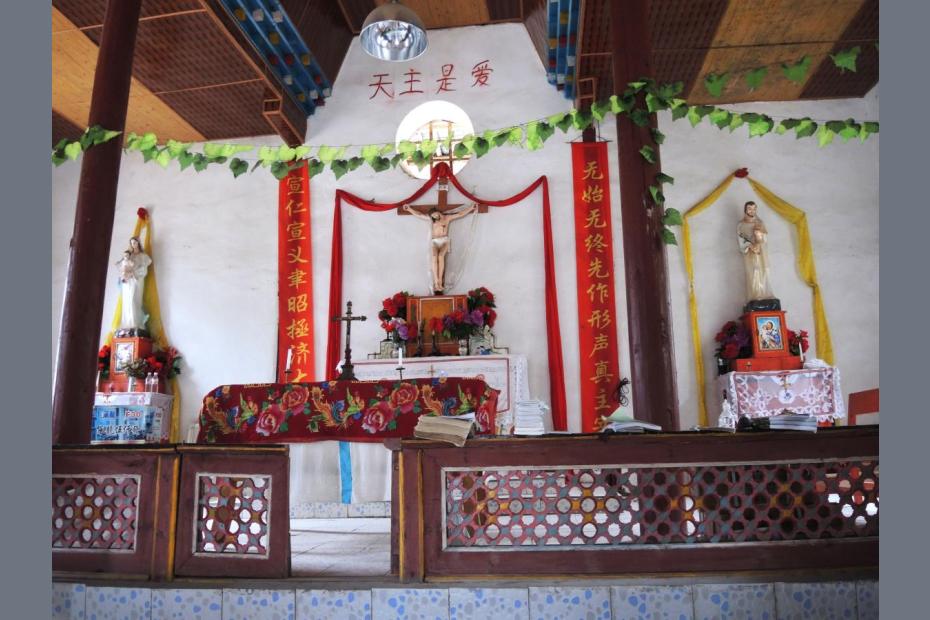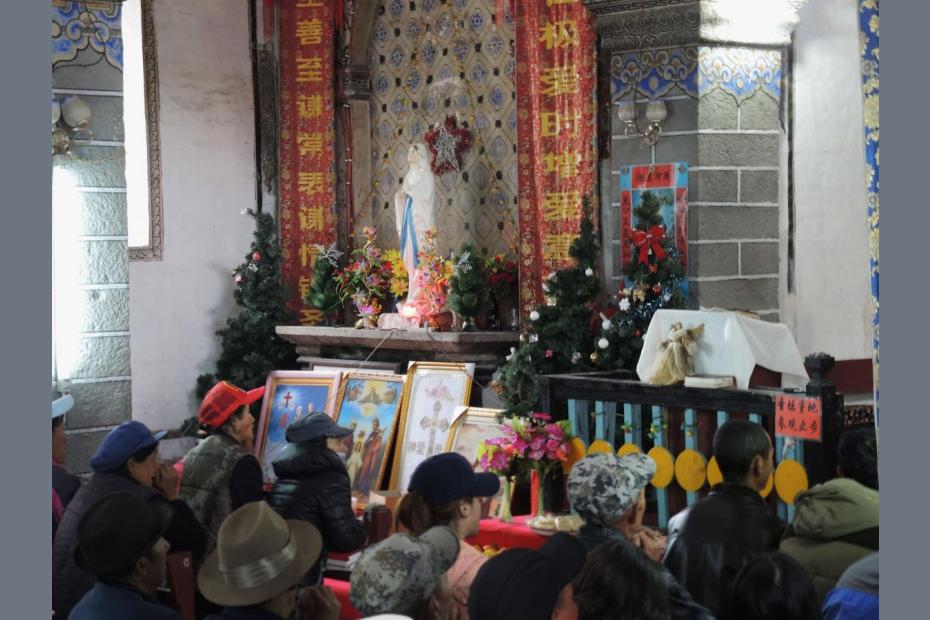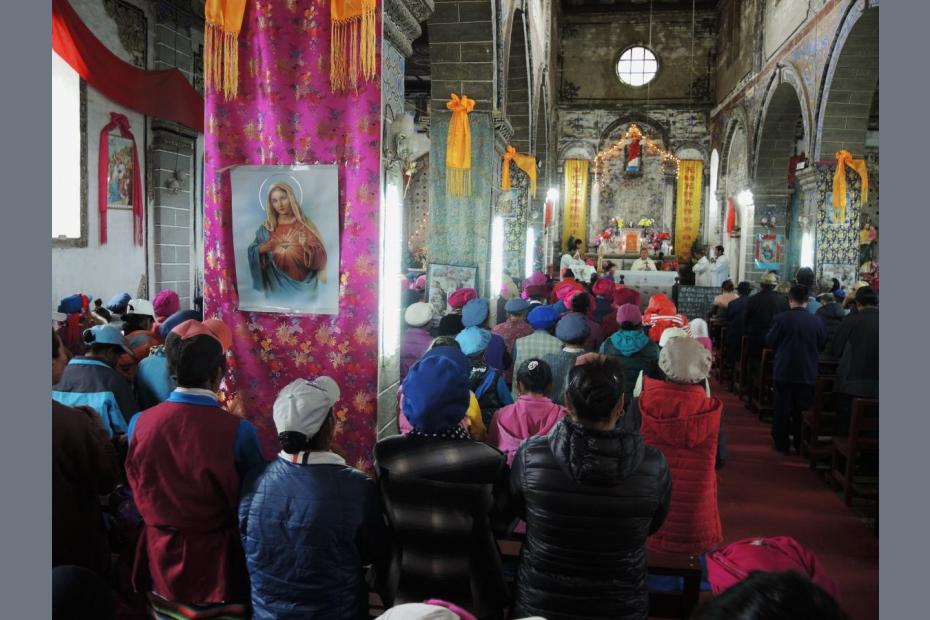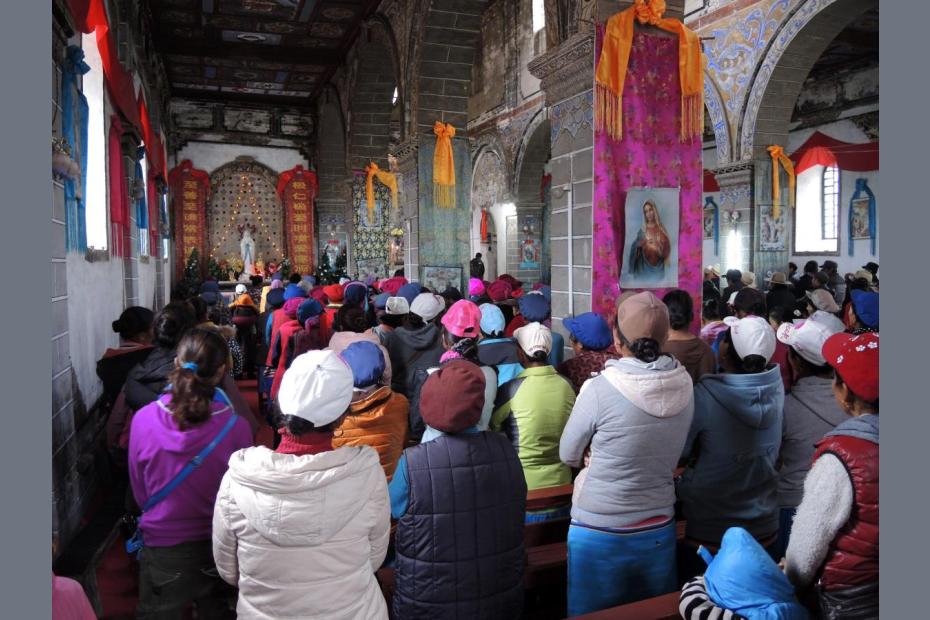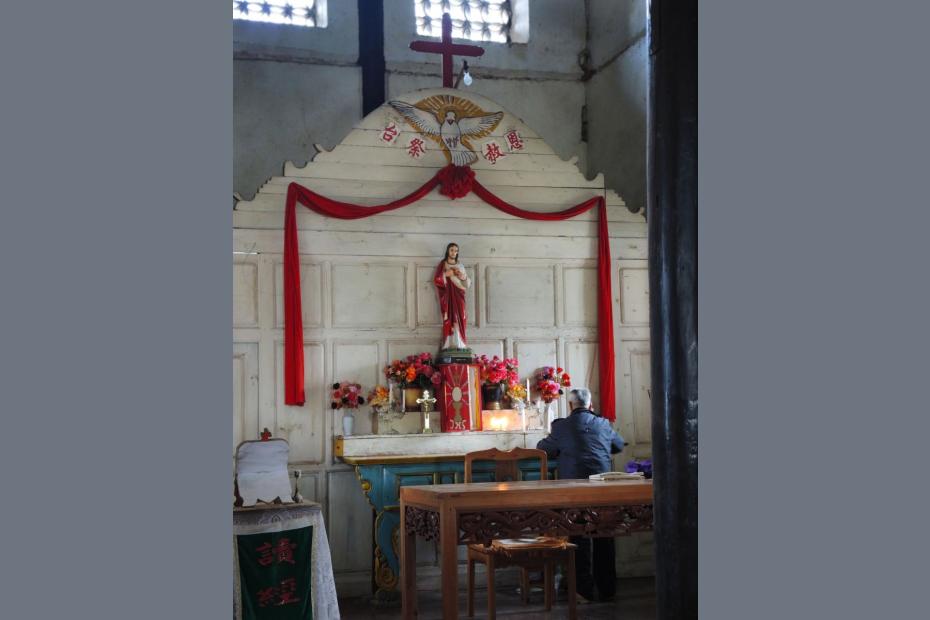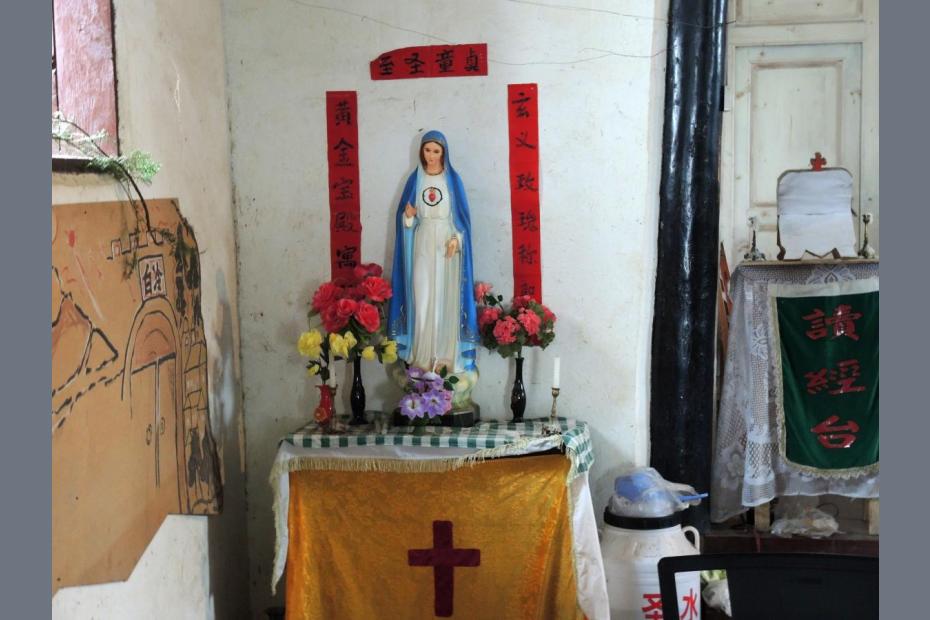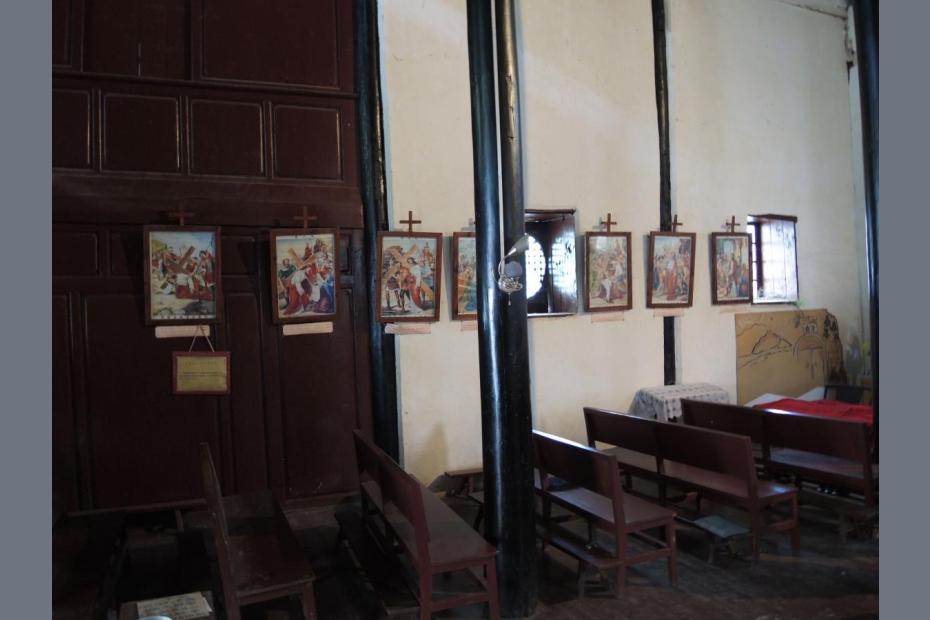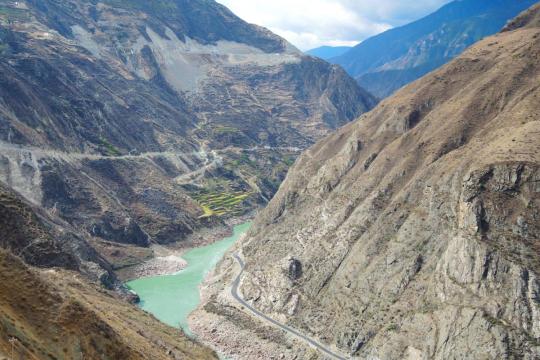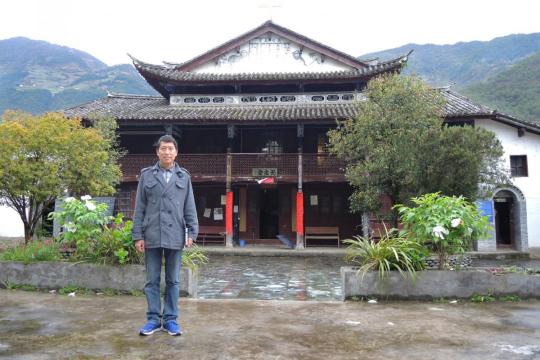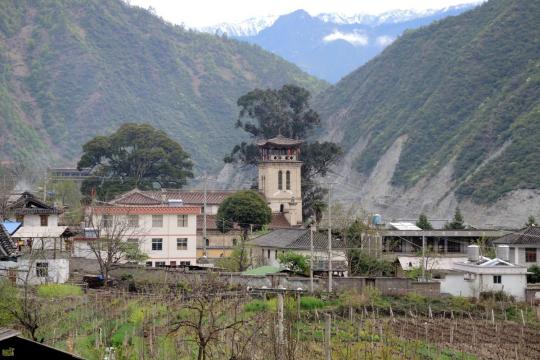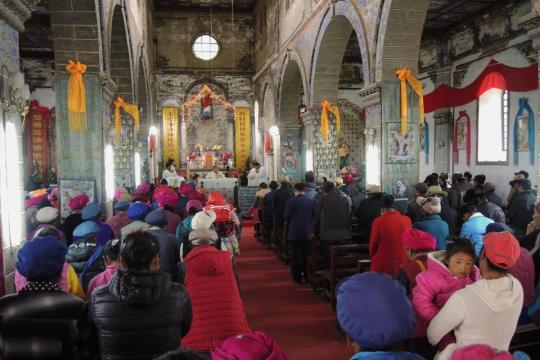As is true elsewhere in China, the constellation of saints in the Lancang River area among Tibetan, Naxi and Lisu people is quite small. Aside from the crucifix and the Sacred Heart, stations of the Cross and occasional symbols of God the Father or the Holy Spirit, the only other Catholic religious personages one encounters are Mary and Joseph, who are found to the left and right side of altars. These devotions make sense in light of the French, and later Swiss missionaries who led the communities and surely fostered them.
Other saints are absent. Asked about that, one priest in Yunnan replied, “That’s true. I don’t know why,” and confirmed that the saints were largely absent not only visually, but in terms of devotion.
In another sense, some local saints are extremely significant to the Catholic communities there. The churches at Cizhong and Xiaoweixi go to great lengths to memorialize, in little museums next to the churches, the French and Swiss missionaries who led these churches for so long. The images in the museums focus on the lives of the missionaries, but do not emphasize that one of their number, Maurice Tornay, had been beatified by Pope John Paul II. The Catholic cemetery at Cigu has very carefully restored the tombs of the priests who were martyred there in 1905, and has an altar to them. Francis Lim, who spent considerable time in these communities, describes Tibetan Catholics as being very eager to describe and remember the tortuous murders committed by Buddhist monks against the priests.1 Local lay people who suffered persecutions are apparently remembered as well, though this is too politically sensitive a subject to discuss in any depth with outsiders.
- 1Francis Khek Gee Lim, “‘To the Peoples’: Christianity and Ethnicity in China’s Minority Areas” in Francis Khek Gee Lim, ed., Christianity in Contemporary China: Socio-cultural Perspectives (London: Routledge, 2013), 112.
